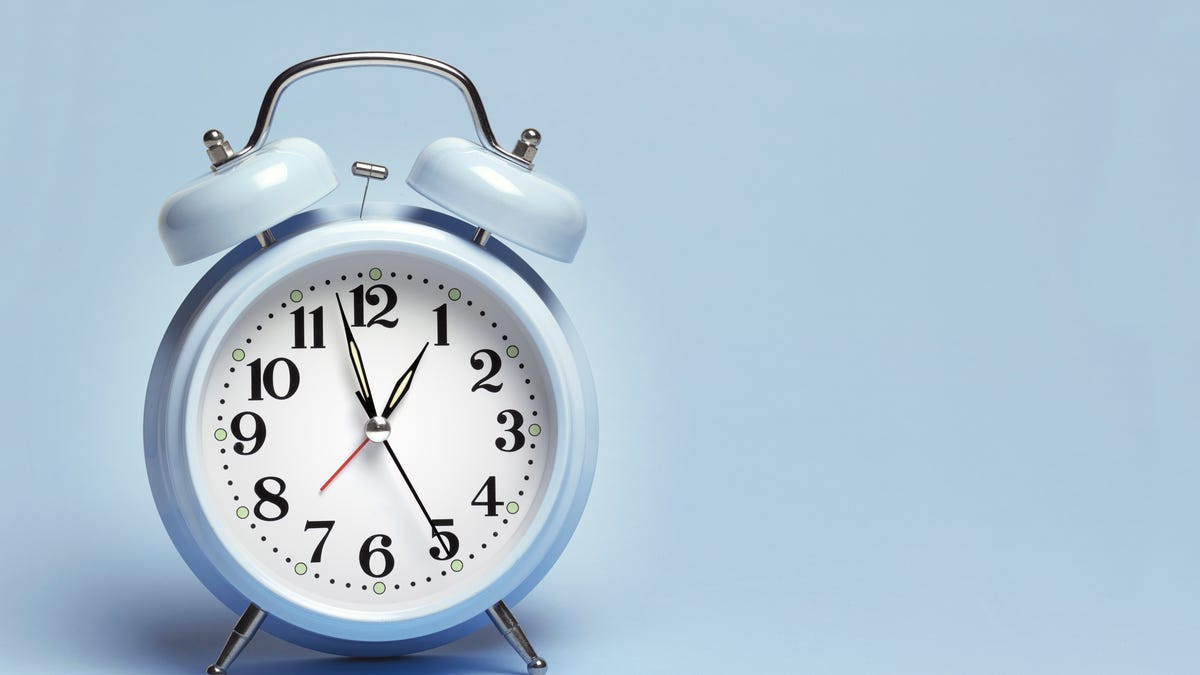 Why You Can Trust CNET
Why You Can Trust CNET 4 Tips for Combatting Daylight Saving Fatigue
You and your sleep don't have to suffer after daylight saving time. Here are a few tips for better rest.

Daylight saving recently had us spring forward and lose an hour of sleep. Even 1 hour of change can have you feeling out of whack, mess with your productivity and energy levels and cause sleep deprivation.
Light and darkness play a huge role in dictating our circadian rhythm, the internal bodily process that signals when it's time to wake up and when it's time to hit the hay. This can impact things like when you feel hungry and when you may feel drowsy.
Read more: 3 Ways to Reset Your Internal Clock After the Time Change
If you're still struggling to find your new normal after the change, these four tips can help.
For more on daylight saving time, learn about efforts to make it year-round and how to treat seasonal depression with light therapy.
4 simple ways to adjust to the time change
Go outside and get some sun
The end of daylight saving time marks the start of shorter days and earlier sunsets, when your after-work supermarket trip is lit by the glow of the moon rather than the sun's rays.
But in the spring, the opposite is true. The sun is now out later in the day, so you can enjoy more sunlight after work or school. While this may be good news for people who want to maximize time spent outdoors, it does mean less light in the morning. To get the health and sleep benefits of sun exposure in the morning, continue spending time outside in the morning, even if it means rearranging your routine a little.
Read more: Sneak More Exercise Into Your Daily Routine
Keep a regular sleep schedule
Now that the time change has passed, continue to maintain the same bedtime each day to help reset your body's circadian rhythm. Once you get into a consistent pattern, your body will align with your schedule and naturally recognize when it's time to wake up or go to sleep.
Try a sleep mask
This may be more relevant in the fall or winter, but it can benefit anyone who likes to wake up in the morning on their own time and not the sun's time: try a sleep mask. There are options that fit comfortably around your face, preventing light from seeping in and waking you up.
Set your clock the night before
When time adjusts an hour, setting your clock the night before allows you to wake up with the adjusted time, which prevents any lateness and potential confusion. This can also help your body's internal clock adapt to the time change with less disruption to your daily routine.
Read more: Driving at Night: 9 Tips as Daylight Saving Time Ends
What is seasonal affective disorder?
Also known as seasonal depression, seasonal affective disorder, or SAD, is a collection of symptoms that most often emerges in the darker months and can include fatigue, depression, oversleeping, weight gain and social withdrawal. If you have a family history of depression or bipolar disorder, your risk of developing SAD is higher, according to the Mayo Clinic.
SAD tends to affect people between November and April and is most common among people in the Pacific Northwest, the Northeast and other regions that experience shorter, darker days and colder winters.
Recommended treatments for SAD include exercise, healthy eating, a consistent sleep schedule and regular exposure to sunlight. Other options include meditating, decreasing screen time and light therapy.
Read more: Delayed Sleep Phase Syndrome
How daylight saving time got started in the first place
The idea of daylight saving was first proposed in 1895 in New Zealand, but it wasn't put into practice until World War I, when Germany used it as a way to save electricity on lighting. The US followed suit, signing DST into law in 1918 to save energy during the war.
But it was quickly repealed in 1919 after the end of the war due to its unpopularity among citizens.
Since then, the US has had a confusing, back-and-forth relationship with DST. For the most part, states and cities have been left to decide for themselves whether they want to observe the time change. This made it difficult for public transportation services and broadcast networks to properly coordinate times.
In 1966, President Lyndon Johnson signed the Uniform Time Act, which created set dates when the nation would collectively start and end DST. Starting in 2007, most of the US has observed daylight saving time from the second Sunday in March to the first Sunday in November. Any state that doesn't want to participate, however, is allowed to pass a law through its legislature.
Not all states observe daylight saving time
Neither Hawaii nor Arizona observes daylight saving time. In addition, 47 other states have introduced bills to abolish changing the clocks. The measures that were signed into law are either waiting for Congress and the US Department of Transportation to abolish DST nationwide or for neighboring states to join the cause so they don't disrupt regional time zones.
Some argue for permanent daylight saving time, while others, like the American Academy of Sleep Medicine, say we should adopt standard time year-round. In 2022, the Senate unanimously passed the Sunshine Protection Act, which would make daylight saving time permanent year-round, but it has not been approved by the House. However, there hasn't been any further updates to make that legislation a reality.

